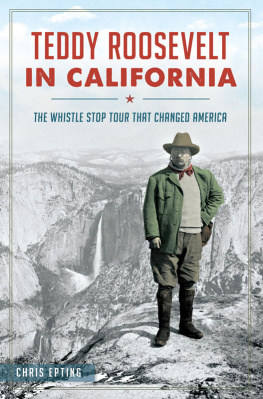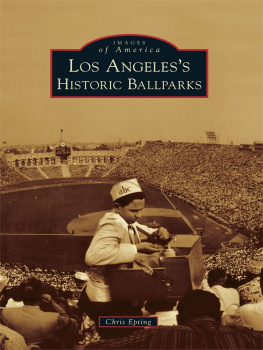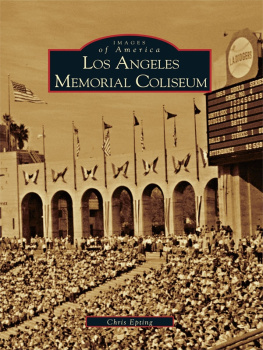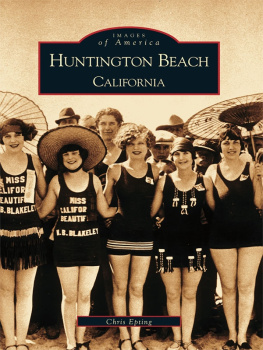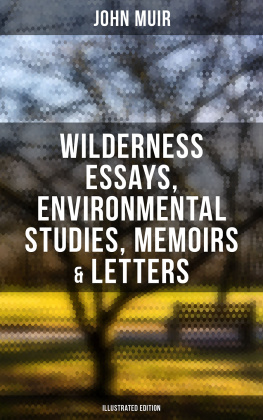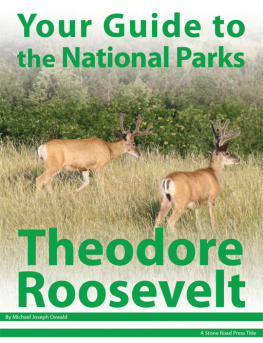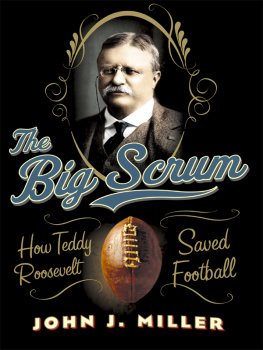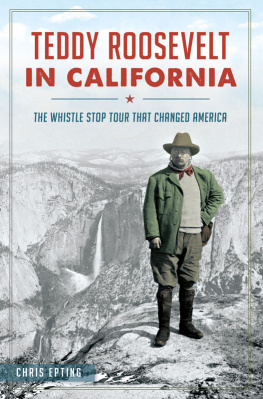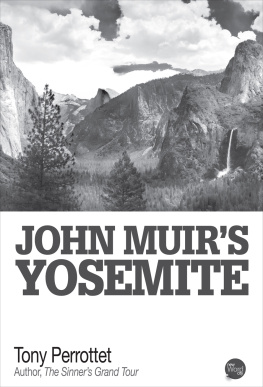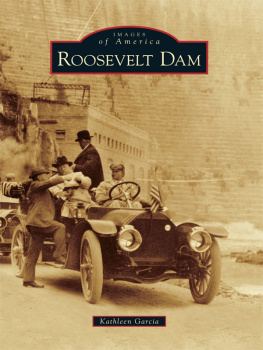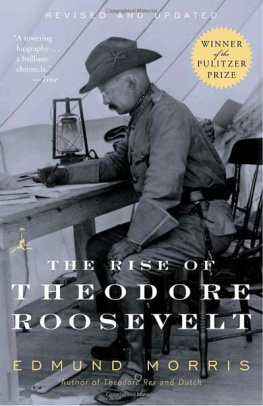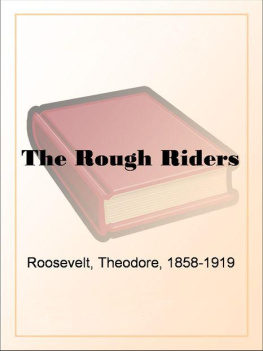

Published by The History Press
Charleston, SC
www.historypress.net
Copyright 2015 by Chris Epting
All rights reserved
Images courtesy the author unless otherwise noted.
First published 2015
e-book edition 2015
ISBN 978.1.62585.336.3
Library of Congress Control Number: 2015948834
print edition ISBN 978.1.62619.801.2
Notice: The information in this book is true and complete to the best of our knowledge. It is offered without guarantee on the part of the author or The History Press. The author and The History Press disclaim all liability in connection with the use of this book.
All rights reserved. No part of this book may be reproduced or transmitted in any form whatsoever without prior written permission from the publisher except in the case of brief quotations embodied in critical articles and reviews.
This book is dedicated to the Honorable William Alsup, U.S. district judge, and the late Steve Medley (longtime head of the Yosemite Association). Thanks to the passion and dedicated efforts of these two friends, today there is now a place recognized as Roosevelt Point located in Yosemite National Park near one of the spots where President Theodore Roosevelt and John Muir camped out in 1903. Judge Alsup continues to wander and explore throughout the Sierras, and Im deeply grateful to him for sharing his story with me. This dedication also extends to the National Park Service for its terrific reserouces, remarkable employees and steadfast dedication to protecting, preserving and maintaining places like Yosemite.
CONTENTS
ACKNOWLEDGEMENTS
Speeches and quotes herein came primarily from the Library of Congress and the Theodore Roosevelt Collection at Harvard Library. Id also like to thank Heather Cole, assistant curator of modern books and manuscripts and curator of the Theodore Roosevelt Collection, Houghton Library, Harvard University, for her support in helping me procure certain photos for this book and for her additional assistance. Thanks also to Bob Webber at the Pullman Library for helping me trace what became of President Roosevelts personal train car from the historic 1903 tour of western states. Thanks to Lynn Northrop at the Raymond Museum in Raymond, California, for her wonderful knowledge regarding her towns special history and how it relates to the journey. As always, thanks to the team at The History Press, including Megan Laddusaw, Ryan Finn and Anna Burrous, as well as to Jerry Roberts for helping me get this project up and running. Most of all, thank you to my family, for always supporting labors of love like this. And last but not least, thank you, the reader, for your interest. It means more than I can express.
INTRODUCTION
To start, here are a few words from Theodore Roosevelt, a president who truly loved and appreciated nature:
We have fallen heirs to the most glorious heritage a people ever received, and each one must do his part if we wish to show that the nation is worthy of its good fortune.
A grove of giant redwood or sequoias should be kept just as we keep a great and beautiful cathedral.
We have become great because of the lavish use of our resources. But the time has come to inquire seriously what will happen when our forests are gone, when the coal, the iron, the oil, and the gas are exhausted, when the soils have still further impoverished and washed into the streams, polluting the rivers, denuding the fields and obstructing navigation.
I recognize the right and duty of this generation to develop and use the natural resources of our land; but I do not recognize the right to waste them, or to rob, by wasteful use, the generations that come after us.
Of all the questions which can come before this nation, short of the actual preservation of its existence in a great war, there is none which compares in importance with the great central task of leaving this land even a better land for our descendants than it is for us.
Spring would not be spring without bird songs, any more than it would be spring without buds and flowers, and I only wish that besides protecting the songsters, the birds of the grove, the orchard, the garden and the meadow, we could also protect the birds of the sea-shore and of the wilderness.
Life is a great adventureaccept it in such a spirit.
Some historians call Theodore Roosevelt the father of conservation. As president, he authorized the creation of 150 national forests, 18 national monuments, 5 national parks, 4 national game preserves and 51 federal bird reservations.
In 1903, two years after becoming our nations youngest president (age forty-two) after the assassination of William McKinley, Roosevelt embarked on his first trip to the West Coast not only to help shore up votes for the following years election but also to explore and get lost in nature.
The AprilJune 1903 tour of the West remains one of the most important presidential sojourns in history. Fourteen thousand miles through twenty-five states, nearly 150 towns and cities and more than two hundred speeches (including five major addresses). Those two months away from Washington, D.C., changed Roosevelt for the better, and our country is still feeling the positive impact of the journey. The centerpiece of the trip was Roosevelts first visit to California, where he would spend nearly three weeks. But squeezed in between the appearances and pageantry was a historic three-day wilderness adventure at Yosemite with naturalist John Muir. That brief camping trip in Yosemite proved to be a game changer for the wide-eyed president who loved the rugged great outdoors and would soon, thanks to Muir, work even harder to protect it.
After the trip, Addison C. Thomas was commissioned to write an account of the trek entitled Roosevelt Among the People. Only nine copies of the book were published, with the first copy being presented to Roosevelt himself. Addisons preface began:
Not since the time of Napoleon has there been a man of affairs on the worlds stage who has attracted the attention of all nations and classes of people as does Col. Theodore Roosevelt. He is picturesque, aggressive, courageous and honest. The stirring events of the past few weeks, in his triumphal march through Europe on his mission of peace has called renewed attention to these same triumphal marches in the United States, when he went among the people to learn their views and expound his doctrine, while President of the United States.

President Theodore Roosevelt, pictured in 1903.
The most notable of these journeys was in the spring of 1903, when he went from the Atlantic to the Pacific and through the South and Southwest, being received everywhere by the acclaim of the multitude, regardless of political affiliation. The journey, and the speeches which he delivered make a most interesting and thrilling chapter in the history of our country.
No citizen of the Republic can be well informed on public affairs who is not intimately acquainted with the events of this historic trip. The pages of this book have been carefully compiled, so as to cover in a most striking, yet accurate manner, every event of Col. Roosevelts journey, and so well has this been done that the result has received his personal endorsement
Next page
